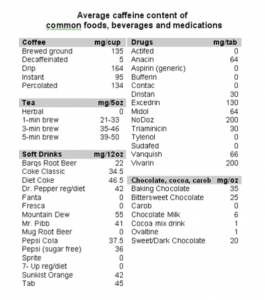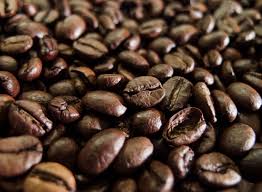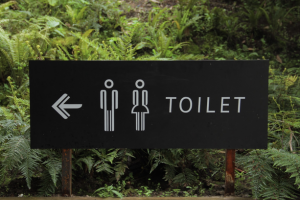The Ups and Downs of Caffeine
“Caffeine is an addiction” – They said
“Caffeine is my antidote” – I corrected
-Vaisali Shanmugen
I don’t know about you, but one of the best parts of my day is waking up, grinding some medium roast beans, boiling some water, and filling-up my French press. The aroma from the blooming grounds, the swirl of a stick to make sure all grounds have been submerged, the acquired patience of a proper steep, and the slow, even press of the filter, culminating in that warm hug of a first sip. Like many of you, I love my coffee, and, frankly, I rely on it to perform my best each and every day.
The magic drug, which helps to propel us forward each morning is caffeine. It is arguably the most accepted drug in the world and is found in over 60 plants, from coffee beans to tea leaves, to cacao pods. Caffeine is consumed every day across every continent in the form of coffee and tea beverages, chocolate, soft drinks, medication, and various other supplements. Like any other substance we use to increase our mental and physical performance, caffeine use has its ups and downs. Let’s take a look.
What Is Caffeine?
Caffeine belongs to a small family of substances, called “methylxanthines”. Other methylxanthines, like theobromine and theophylline, are also found in teas and cocoa. Methylxanthines are also used to treat airway blockage caused by bronchitis, asthma, and emphysema.
Consumption of caffeine helps to prevent the body from slowing down at a cellular level through blocking adenosine (helps downregulate the nervous system) and inhibiting phosphodiesterase. Phosphodiesterase is an enzyme that breaks down a messenger protein, called cAMP that helps transfer signals within the cells. Caffeine blocks this breakdown, so this signal transfer can produce a stimulant effect.
Why Use It?
Caffeine is used by people from all walks of life, so it would be silly to assume they all want to enhance their athletic performance. Most people likely use some form of caffeine to simply enhance wakefulness each day. If you’ve ever done shift work, then you know caffeine can be your best friend.
For those of us who pursue recreational and athletic performance, caffeine can be a useful tool. It’s also one of the most studied ergogenic aids. Those who keep recreational caffeine use to a minimum can likely benefit greatly from utilizing caffeine around training times to help increase endurance and energy output through temporarily increased mental acuity and nervous system function.
For those who are more aesthetically minded, caffeine combined with exercise has been shown to increase fatty acid mobilization out of storage and into mitochondria, which promotes fat loss. This is assuming the individual is following an appropriate nutrition and recovery program to aid in such fat loss.
Why Not?
As many of us know or have experienced, caffeine is highly addictive. Most of us are also very good at building a tolerance to its effects over years of use, thus reducing its effectiveness, which makes us want to use more to get some of the magic back. This addictiveness is enhanced by caffeine’s ability to decrease serotonin and increase dopamine levels, so we get a one-two punch of decreased mood and a strong reward signal after consuming.
Like other drugs, trying to quit caffeine can cause the user to have withdrawals. If somebody cuts caffeine from their diet cold turkey, the previously blocked adenosine can come back in an overflow, triggering withdrawal symptoms.
Common symptoms are headaches, upset stomach, and shakiness. Curiously, those are also some of the symptoms of overuse. Those who want to cut down their use of caffeine should do so slowly, and incrementally. This will allow the body to wean off of the substance, and it will also slowly build the habit of not using. Keep in mind: dependence isn’t only the physical need for the drug, it’s also rooted in the ritual of taking it.
Caffeine can also disrupt sleep and appetite, depending on the timing and amount of ingestion each day. This disruption can greatly hinder any performance or athletic goals. We generally recommend people have a strong caffeine cut-off time at around 2:00-3:00 PM. The reason being, caffeine has a half-life of about five hours. Meaning, if you consume 40mg of caffeine, five hours later you’ll have about 20mg lingering in your bloodstream, waiting to be metabolized and excreted via your liver and urinary tract. 40mg is less than half a cup of coffee, to put it in perspective.
Finally, consumption, and overconsumption, of caffeine can have potent diuretic and laxative effects. Our bodies cannot store excess caffeine, so it must be metabolized by the liver and excreted through the urinary tract. This additional activity irritates the bladder, possibly leading to loss of control in very extreme cases. Caffeine also causes the stomach to increase acid production, which can lead to discomfort, and have the downstream effect of stimulating diarrhea.
Safe Use
Keep in mind that there is no actual nutritional need to consume caffeine. However, there are safe, effective, and useful ways to make it work for you.
According to the Mayo Clinic, up to 400mg/day is safe for most adults to consume. This equals about four cups of brewed coffee, ten cans of soda, or two “energy shots”. Keep in mind, when guidelines say “cups”, they mean 8oz. If you’re using a travel mug or getting medium or large coffees at a coffee shop, you’re probably filling 12oz or 16oz containers.
If you want to use caffeine as an ergogenic aid for competition or general performance enhancement, try a cup of coffee about 15-40min before your session. The effective amount will vary with the individual. It works best if you don’t consume much more on a regular basis. Remaining sensitive to caffeine will yield the best performance-enhancing results.
Also, if you plan on using caffeine during competition for an extra boost, you should use it in practice leading up to the big day. It’s important to know how much caffeine you’ll need to feel its effects, and you also need to know how caffeine affects you physically on all levels, especially when it comes to bathroom needs. You don’t want to have a surprise sprint to the restroom when you’re supposed to be on the field or starting line.
For athletes in drug-tested federations, keep in mind that a urinary caffeine level of more than 12mcg/mL can be considered “doping”. Most individuals would have to drink about eight cups of coffee to reach this level, which is relatively easy to do for the experienced user.

Conclusion
Caffeine is a widely used, globally accepted drug, which has many uses for the general public and athletes, alike. However, with the ups come downs, and the downs should be strongly considered when adding or changing the use of a drug in your daily routine. They were not discussed this time, but some of the linked articles dig into the risks caffeine has for pregnant women, children, and those on antidepressants. Maybe we’ll dig into those subjects a bit further in another article.
Take care and continue working to get into your Ready State!























TRS Virtual Mobility Coach
Guided mobilization videos customized for your body and lifestyle.
FREE 7-Day Trial